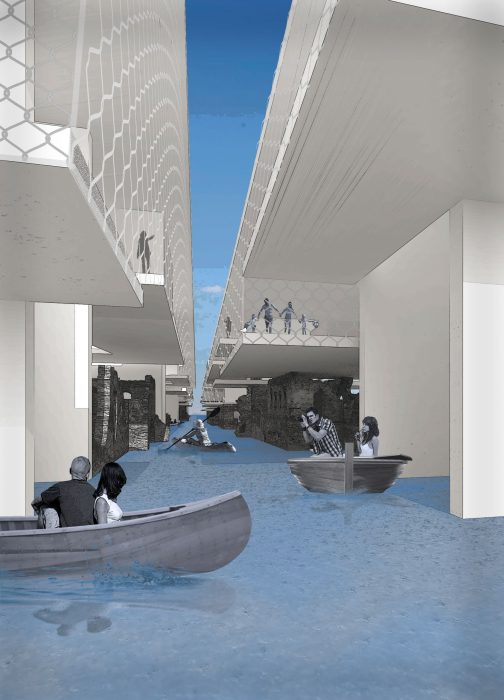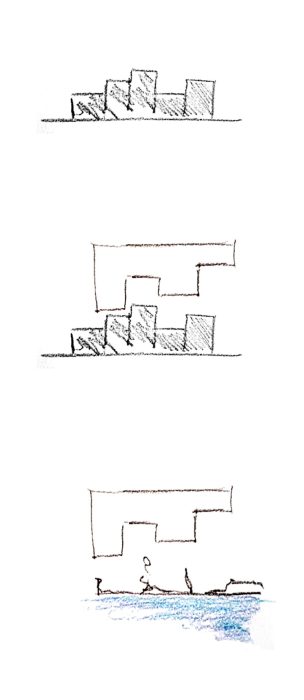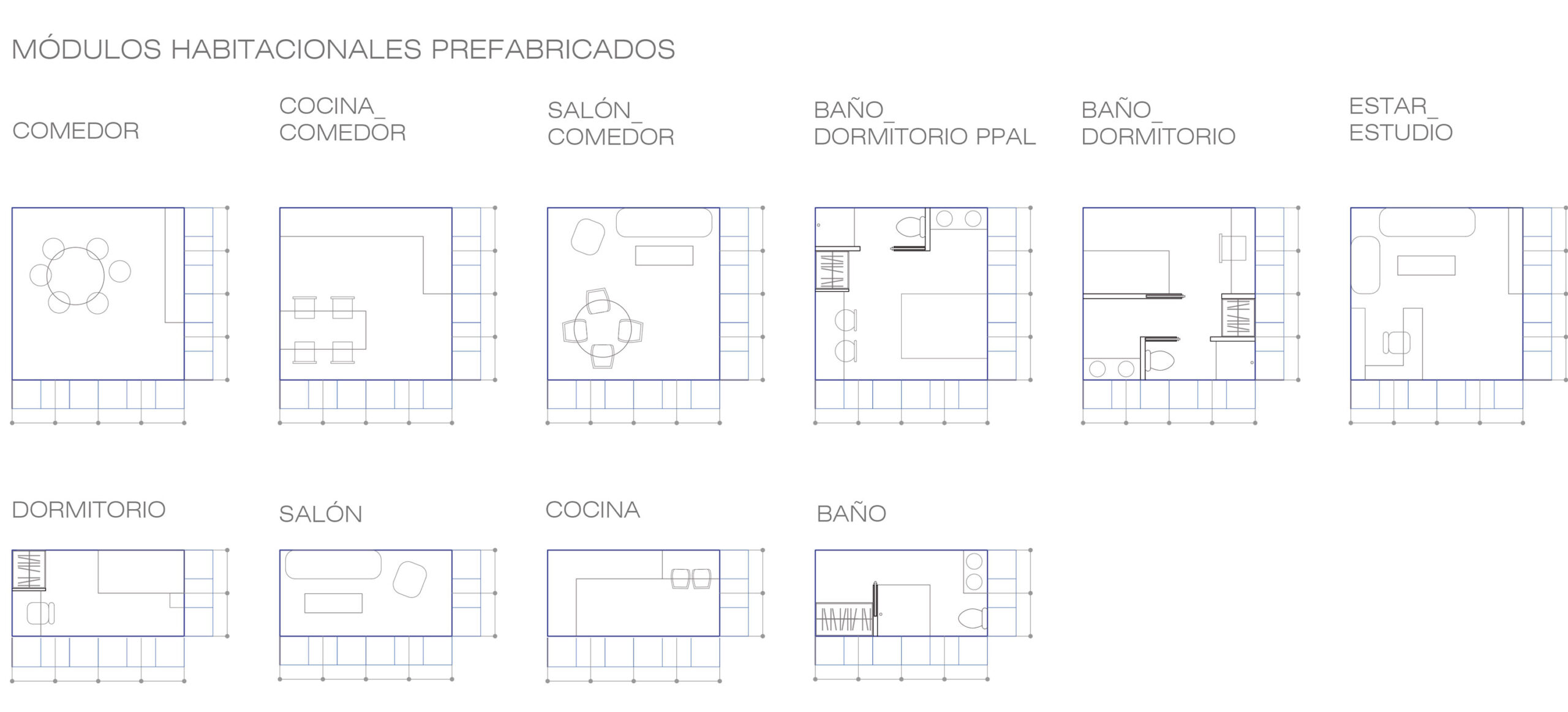Architect: Gloria Vega Martín | Year: 2011
Fighting Sea Level Rise (academic project)
Summary
The project proposes a superposition of layers and process in time, where the urban society of «El Palo» remains free of urban influence as it has been doing since the first settlements. When the sea level rises to 3m, the traces of «El Palo of today» will remain through the negative of its current skyline.
The goal is not a final product, but to create a tool for the inhabitants to play an active role in the design of the city.
«La originalidad consiste en el retorno al origen, así pues original es aquello que vuelve a la simplicidad de las primeras soluciones»
Antoni Gaudí
The Project
The neighborhood of «el palo» grows thanks to the self-construction of its inhabitants, its generation is spontaneous and within the limits of legality. At present the sector is very overcrowded and the houses are affected by the law so that it is not possible to act on them with renovation or rehabilitation measures.
The important thing about these fishermen’s houses is the history of the plots of land on which they are built, since the 18th century these sectors have housed fishermen: first in huts and later in self-built houses thanks to the advance of technology.
Strategy
1. The current plot presents an arrangement in strips between which small access streets and alleys act as public space.
2. In order to increase this public space without losing the plot, some dwellings are eliminated to provide larger dimensions for the rooms.
3. In these openings will be where the communication and structural cores of the piece that overlaps the neighborhood will be supported.
4. When the sea level rises to 3m the current houses will disappear as such, leaving only the traces of today’s palo, being these the memory of what was the neighborhood; however the rise in sea level and the superimposed piece will allow us to admire «yesterday’s palo» from the «new palo» and return to inhabit the ruin as a public space immersed in the sea..
In the current elevation we observe a heterogeneity of the facades but always with heights that vary between low+1, low+2 and low+3; we also observe narrow alleys between the buildings that act as access to the houses on the side. Since the current elevation is very crowded, a sponging of the plot is carried out, expanding those inter-dwelling spaces that improve the skills of public space.
The annexed piece rests on the urban fabric only at some points by mere structural and access function, the piece seems to levitate except for those «feet», the stepped profile of the substructure is adapted to the current skyline of «el palo».
When the water level rises 3m the houses will disappear and exist as ruins; however the new piece will give the image of the «negative of el palo» as it maintains today’s skyline over the years.
In the rising sea level is seen an opportunity for the transformation of «el palo» the project conceives the neighborhood as a changing environment, in which introduces flexible architecture susceptible to transformation according to tastes and interests of the user.
El palo is under permanent construction.
The objective is not to create a final product but a tool, an instrument to give the inhabitants an active role in the design of the city.
In the new piece the role of the inhabitant of the palo is decisive since he chooses where to place his house and the dimension of these; so that it is not an uncontrolled self-construction some rules that must be fulfilled are indicated







